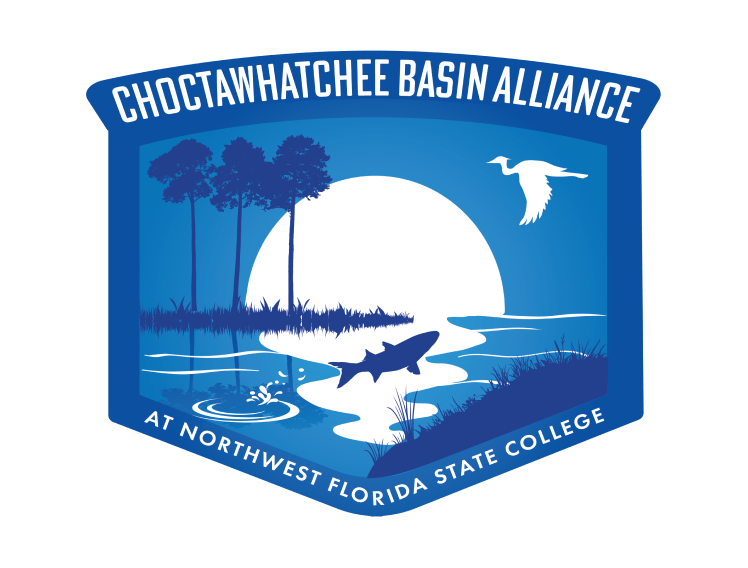
A living shoreline is a shoreline management option that uses living plants, recycled oyster shells, fossilized oyster shell, sand fill, or a combination of natural structures with riprap or offshore breakwaters to protect property from erosion. Living shorelines present an ecological and economic alternative that is viable for low-erosional settings in Choctawhatchee Bay.
In Choctawhatchee Bay, many property owners use hardened structures such as sea walls, riprap, groins and bulkheads (as opposed to Living Shorelines) to stabilize and protect waterfront property from erosion caused by wind and wave action. While these “hard” solutions may prevent some localized shoreline erosion, they often act to increase erosion by reflecting wave energy and altering natural sediment movement. Vertical shoreline structures eliminate the varying water depths, wave attenuation and diverse habitat types associated with natural, gradually sloping beaches, seagrass meadows and salt marshes. Loss of nursery, feeding and refuge habitats leads to loss of vital estuarine species.
CBA's living shoreline initiative is mainly comprised of two components: oyster shell breakwaters (artificial reefs) and native shoreline grass plantings. Combined, the reefs and shoreline grasses help to reduce shoreline erosion, act as habitat for marine-life, filter stormwater run-off, and improve water clarity and water quality in Choctawhatchee Bay. CBA uses recycled oyster shell to construct artificial reefs that act as a breakwater for impeding erosion.
The oyster reefs not only benefit the stability of the shoreline they are protecting, but they also serve as habitat for intertidal marine life. Many creatures from Choctawhatchee Bay call our reefs their home, including live oysters! Oyster larvae float along in the current and attach themselves to like-surfaces, slowly populating the artificial reef. Oysters are filter-feeders: one adult oyster is capable of filtering 50 gallons of water in one single day. As hundreds of oysters grow on the reef, they improve the water clarity and water quality, benefitting the entire Bay. To stabilize the shoreline, CBA plants smooth cordgrass (Spartina alterniflora). Native shoreline grass such as smooth cordgrass acts as a filter for stormwater run-off, in addition to providing habitat for marine-life and birds.
CBA's hands-on environmental education program, Grasses In Classes, allows elementary-age youth to fulfill the role of repopulating native shoreline grass by growing, acclimating, monitoring, and planting the smooth cordgrass. In combination with the recycled oyster shell reefs, the native cordgrass restores the degraded shoreline and completes CBA's living shoreline initiative.
Stormwater is simply water that accumulates on land as a result of storms, and can include runoff from urban areas such as roads and roofs. Historically, stormwater has been diverted away from urban areas and road ways as fast as possible - usually into the nearest waterbody. Our local Choctawhatchee Bay and its bayous receive significant amounts of stormwater from the uplands adjacent to them.
Under the Federal Clean Water Act, local municipalities must obtain a permit to discharge stormwater into local waterbodies. CBA has partnered with local municipalities to help achieve maximum compliance with their National Pollutant Discharge Elimination System (NPDES) Program. The partnership is the initial step in uniting local governmental entities to protect the ecological integrity of the Choctawhatchee Watershed.
The NPDES Program is a mandate from the Environmental Protection Agency that requires municipalities to submit a permit to the Florida Department of Environmental Protection (DEP) that outlines an initial five (5) year strategy on improving water quality through six (6) guidelines:
- Public Education/Outreach
- Public Participation/Involvement
- Illicit Discharge Detection/Elimination
- Construction Site Runoff Control
- Post-Construction Runoff Control
- Pollution Prevention/Good Housekeeping
Currently, CBA works with the City of Destin and Walton County. The products of these partnerships include brochure and newsletter outreach, Sediment and Erosion Control Inspector Training, Illicit Discharge Detection and Elimination Training, rain barrel and rain garden workshops, stormwater education for schoolchildren, and stormwater remediation construction projects.
We have the unique ability to unify the community’s resources in helping our partners achieve maximum compliance with their NPDES permits. These partnerships are a major step to enhancing the overall water quality within the Choctawhatchee Watershed. Through these partnerships, CBA hopes to fulfill all aspects of its mission: to protect and preserve the watershed but also to sustain and provide optimum utilization of the Choctawhatchee Basin Watershed.
For more information about NPDES go to the following link: http://cfpub.epa.gov/npdes/

In November 2010, CBA and our Americorps Green Team launched the new O.Y.S.T.E.R. Shell Recycling Program. The ultimate goal of the O.Y.S.T.E.R. Shell recycling program is to collect the oyster shells that would otherwise end up in a landfill, and reuse them to construct oyster reef habitat. Oyster populations have declined in many places worldwide, and Choctawhatchee Bay is no exception. By building reefs, we are providing a hard structure for oyster spat to settle and thrive as well as habitat for a variety of other important species. Since an adult oyster can filter as much as two and a half gallons of water per hour, it is very important that their populations flourish. Additionally, oyster reefs provide a barrier against waves and boat wake, helping reduce shoreline erosion.
Restaurants who participate in the O.Y.S.T.E.R. Shell Recycling Program are given bright blue, 30 gallon recycling bins, which are kept outside the restaurants, as well as smaller buckets, which are kept inside near the shucking station. Whenever oysters are shucked, the top shells are placed in one of our smaller buckets and then transferred to the outside containers when full. We are not asking restaurants to save the oyster shells that end up on the plates of guests, although we have hopes of making this convenient enough so that we can collect those shells in the future. CBA picks up the blue bins at each restaurant 2-3 times per week, depending on the restaurants’ needs, and replaces each used bin with a clean one.
Once the shell is picked up, it is placed in an outdoor drying area and left for several weeks. Eventually, sun, rain, and time work to clean the shell and destroy any harmful microorganisms, and the shell is then ready to use for restoration. CBA staff and volunteers will shovel the clean shell into mesh bags. The shell bags, which weigh 20-30 pounds each, will be used as building blocks to construct a new oyster reef.
Since the start of the O.Y.S.T.E.R. Shell Recycling Program, we have grown to include 10 restaurants, with several more planning to come on board as soon as the busy tourist season starts.
Current participating restaurants are:
If your restaurant or one you know of is interested in participating, please let us know. Educational materials about the program are available in all participating restaurants. So go out and support these restaurants, buy some oysters and thank them for their participation. It is because of their efforts that we will have a supplemental supply of oyster shells to continue to build oyster reefs and further enhance the health of the Choctawhatchee Basin Watershed.

Launched on Earth Day, April 22, 2014, CBA's Monofilament Recycling Program began as a class project for the Destin Area Chamber of Commerce's 2013-2014 Destin FORWARD class. Each year, the Destin FORWARD group is tasked to come up with a positive impact on the Destin community. Understanding the economic ties Destin has to its waterways as a vacation/fishing destination, the 2013-2014 group knew establishing a Monofilament Recycling Program would benefit the health and sustainability of local waterways.
Often, derelict fishing line finds its way into the marine environment, where it poses a threat to both humans and wildlife. Hundreds of fish, birds and land animals are entangled in monofilament each year. Wildlife monofilament entanglement results in drowning, starvation, loss of flipper, tail or wings and even death.Comprised of non-degradable plastic, monofilament takes over 600 years to break down!
CBA's Monofilament Recycling Program bins are located at various points along the Destin Harbor, at Bluewater Bay Marina Complex in Niceville, FL, and at Nick's Seafood Restaurant in Freeport, FL.



